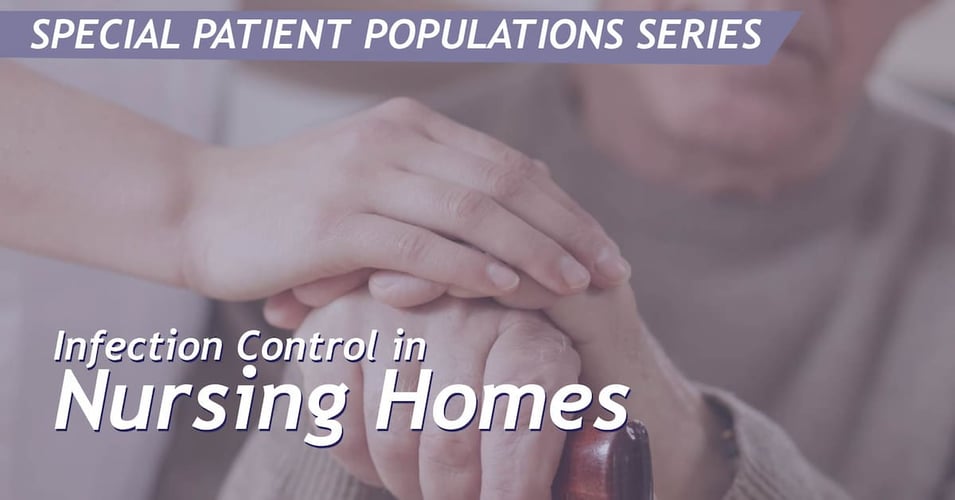The Environmental Programs Service of the Veterans Health Administration: Keeping Patients Safe

 The Veterans Health Administration has long been at the forefront of progress in reducing hospital-associated infections. Through adherence to best practices, investment in effective interventions, and thorough educational opportunities for staff, the VHA has been able to reduce the most common HAIs. Even during the COVID-19 pandemic, the VHA was able to protect residents of long-term care facilities at levels unmatched outside of the federal agency. A huge part of this success is due to the multi-faceted Environmental Programs Service, which ensures that every aspect of the patient's environment is safe. In today's post, we will look at these facets, and how they come together to protect our honored veterans.
The Veterans Health Administration has long been at the forefront of progress in reducing hospital-associated infections. Through adherence to best practices, investment in effective interventions, and thorough educational opportunities for staff, the VHA has been able to reduce the most common HAIs. Even during the COVID-19 pandemic, the VHA was able to protect residents of long-term care facilities at levels unmatched outside of the federal agency. A huge part of this success is due to the multi-faceted Environmental Programs Service, which ensures that every aspect of the patient's environment is safe. In today's post, we will look at these facets, and how they come together to protect our honored veterans.
When President Herbert Hoover signed Executive Order 5398 in 1930, he consolidated the efforts to protect veterans that can trace their roots to the Plymouth Colony of 1636. From these community-driven supports, the world's largest veterans assistance system has grown, including a comprehensive health and medical care known as the Veterans Health Administration, or VHA. This federal agency provides preventative, traditional and specialized medical care, as well as social supports, residential care, and mental health therapies. Research consistently shows that the VHA provides comparable or better care than the private sector, yet the federal agency is constantly working to improve every aspect of care and therefore often leads the private sector in many measures, including reducing hospital-associated infections.
One of the departments directly responsible for keeping patients safe from hospital-associated infections is the Environmental Programs Service (EPS), which ensures "a state of physical and biological cleanliness" at all medical facilities, including residential care, clinics, and hospitals. Through a multi-faceted approach, the EPS addresses every aspect of the patient environment to maximize low bioburden, reduce the possibilities of germ reservoirs, and thereby reduce the risk of disease transmission. These are the many facets of the EPS:
- The Textile Management Program (TCM) ensures that bed linens, patient gowns, healthcare worker garments, and other textiles are maintained, surveilled, and sanitized.
- The Waste Management and Recycling Program (WMR) ensures that waste materials, including contaminated materials, are handled appropriately to reduce pathogen spread.
- The Integrated Pest Management Program (IPM) assures that every facility is free from pests, which can be vectors of infection, using methods that do not impact patients, staff, or the environment.
- The Interior Design Program (ID) implements best practices and standardization to ensure that the surfaces surrounding patients, including every detail from overbed tables to hallway safety features, are selected with the patients' health in mind. Not only concerned with aesthetics, this program considers the patient's entire healing and therapeutic experience. Through the combined efforts of this program, numerous VHA facilities have installed preventive biocidal surfaces in patient areas, including overbed tables and counter tops, that actively kill germs between cleanings.
- The Healthcare Environmental Services Program (HES) supervises the sanitation procedures throughout the VHA, including cleaning and protective-surface maintenance, infection control, staffing, and training. This kind of concerted effort has led to the creation of many industry-accepted protocols.
This kind of holistic approach to the patient environment means the collaboration required to keep patients safe is built into the overarching department. In the private sector, environmental services (janitorial services) aren't automatically set up to work together with interior design personnel or textile management, so getting these departments together requires an innovative administration that carves out time for collaboration and coordination. Private hospitals and long-term care facilities could look to the VHA to see how this level of integration can lead to improvements with measurably positive patient outcomes.
The Veterans Health Administration is rightfully a topic of great interest to many politicians and taxpayers - we should all care deeply about the kind of healthcare our veterans receive after giving so much to their country. We should be careful in our scrutiny, however, to not overlook the significant challenges faced by this federal agency and the innovations it has brought to the healthcare industry. For instance, the VHA is the largest employers of nurses in our nation, who in turn make up the largest workforce within the VHA. In a time of considerable nursing turnover, the VHA has succeeded in retaining 90% of its nursing staff, remarkably higher than the national level, while also initiating programs to reduce burnout and support nurses in their careers. This is an astounding achievement for an agency of this size.
We are particularly impressed with the VHA's success in reducing veterans exposure to healthcare-associated infections. In a future post, we will take a deep dive into how the VHA addresses infection prevention. Until then, have a look at some of the coolest innovations highlighted in the VHA Innovations Ecosystem.
![EOScu Logo - Dark - Outlined [07182023]-01](https://blog.eoscu.com/hubfs/Eoscu_June2024/Images/EOScu%20Logo%20-%20Dark%20-%20Outlined%20%5B07182023%5D-01.svg)




